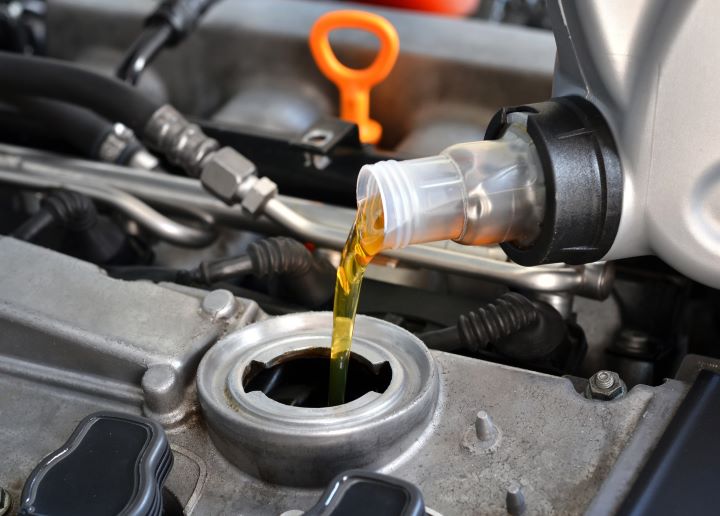Understanding Modern Oil Change Intervals: What to Keep in Mind
Many still follow the habit of changing engine oil every 3,000 miles, but advances in automotive engineering and oil formulation have significantly shifted the recommended intervals. This overview explores how driving habits, engine types, and synthetic oils factor into today’s guidance. Understanding these variables may offer insights into smarter, more efficient maintenance practices.

Synthetic Oil Benefits for Modern Engines
Synthetic motor oils offer superior performance compared to conventional petroleum-based lubricants. These engineered oils maintain their viscosity across extreme temperatures, resist breakdown under high heat conditions, and provide better protection against sludge formation. Synthetic oils typically last 7,500 to 10,000 miles between changes, depending on driving conditions and manufacturer recommendations.
The molecular structure of synthetic oils allows them to flow more easily during cold starts, reducing engine wear during the critical first few minutes of operation. They also contain fewer impurities than conventional oils, which means less contamination buildup in your engine over time. While synthetic oils cost more upfront, their extended service intervals often make them cost-effective in the long run.
Engine Wear Prevention Through Proper Oil Maintenance
Consistent oil changes remain crucial for preventing engine wear, regardless of the oil type used. Motor oil serves multiple functions beyond lubrication, including cooling engine components, cleaning internal surfaces, and neutralizing acids formed during combustion. When oil breaks down or becomes contaminated, these protective qualities diminish significantly.
Metal particles, dust, and combustion byproducts accumulate in used oil, creating an abrasive mixture that can damage engine surfaces. Regular oil analysis can reveal contamination levels and help determine optimal change intervals for specific driving patterns. Severe driving conditions, such as frequent short trips, stop-and-go traffic, or extreme temperatures, may require more frequent oil changes than manufacturer recommendations suggest.
Optimal Oil Change Mileage for Different Vehicles
Determining the right oil change interval depends on several factors, including vehicle age, engine type, oil quality, and driving habits. Most newer vehicles with synthetic oil can safely operate 7,500 to 10,000 miles between changes, while older engines or those using conventional oil typically require changes every 3,000 to 5,000 miles.
Turbocharged engines often require more frequent oil changes due to higher operating temperatures and pressures. Similarly, diesel engines may have different requirements compared to gasoline engines. Always consult your vehicle’s owner manual for manufacturer-specific recommendations, as following these guidelines helps maintain warranty coverage and ensures optimal engine longevity.
Car Maintenance Checklist Integration
Oil changes should be part of a comprehensive maintenance schedule that includes other critical services. When changing oil, technicians typically inspect filters, belts, hoses, and fluid levels, making it an ideal time to address multiple maintenance needs simultaneously. Keeping detailed records of oil changes and related services helps track patterns and identify potential issues early.
Modern vehicles often include oil life monitoring systems that calculate optimal change intervals based on driving conditions, engine temperature, and other factors. These systems provide more accurate guidance than rigid mileage-based schedules, though they should supplement rather than replace regular visual inspections and professional assessments.
| Service Provider | Oil Change Cost Range | Oil Type Options | Additional Services |
|---|---|---|---|
| Jiffy Lube | $30-80 | Conventional, Blend, Full Synthetic | Multi-point inspection, filter replacement |
| Valvoline Instant Oil Change | $35-85 | Conventional, MaxLife, Full Synthetic | Fluid top-offs, battery check |
| Walmart Auto Care | $25-65 | SuperTech, Mobil 1, Castrol | Tire pressure check, basic inspection |
| Quick Lube Plus | $28-75 | Multiple brands available | Transmission service, air filter replacement |
Prices, rates, or cost estimates mentioned in this article are based on the latest available information but may change over time. Independent research is advised before making financial decisions.
Making Informed Oil Change Decisions
Understanding your specific vehicle requirements and driving patterns helps optimize oil change timing and costs. City drivers who make frequent short trips may need more frequent changes than highway commuters, even when using the same oil type. Climate conditions also affect oil performance, with extreme cold or heat potentially shortening service intervals.
Regular communication with qualified technicians can provide valuable insights into your engine’s condition and help adjust maintenance schedules accordingly. Some vehicles benefit from oil analysis services that test used oil for contamination levels, helping determine whether intervals can be safely extended or should be shortened based on actual conditions rather than general recommendations.
Modern oil change intervals reflect significant advances in automotive technology and lubricant chemistry. By understanding these developments and applying them to individual driving situations, vehicle owners can maintain engine health while optimizing maintenance costs and reducing environmental impact through less frequent oil disposal.




